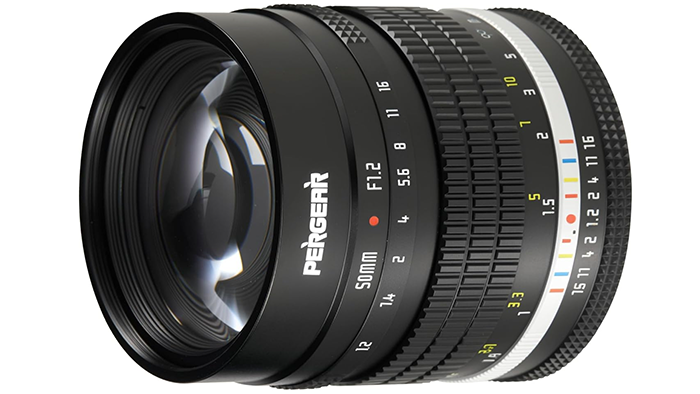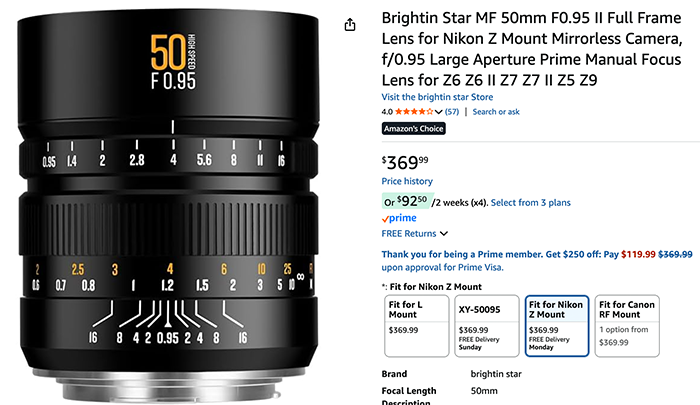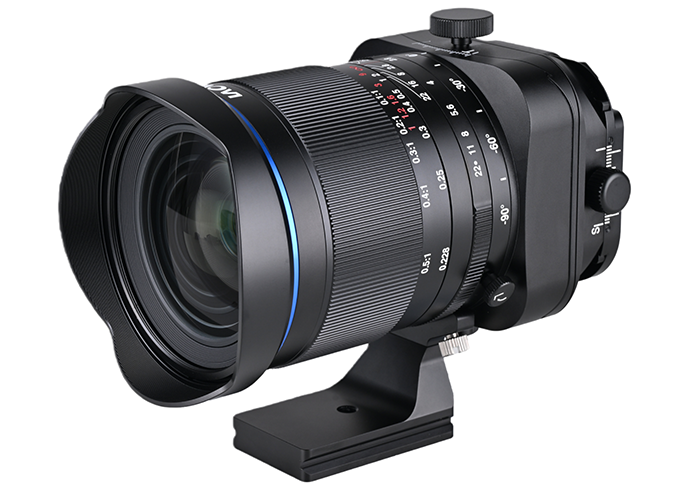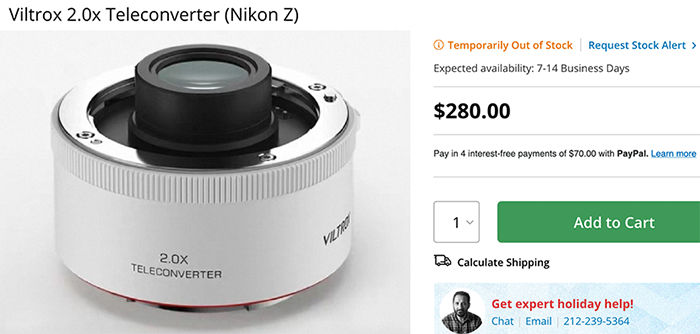New Brightin Star MF 50mm F0.95 II Full Frame Lens
Bright Star announced the second generation 50mm f/0,95 lens and it’s available for preorder on Amazon.
Just announced: Laowa 35mm f/2.8 Zero-D Tilt-Shift 0.5× Macro
The new Laowa 35mm f/2.8 Zero-D Tilt-Shift 0.5× Macro is now available for preorder for $1,249 at Venus Optics store (Click here).
The new Viltrox 2.0x Z-mount Teleconverter is now available for preorder at B&H Photo for $280
You can preorder it now at BHphoto (Click here).
Boost Speed, Denoising & Detail Recovery with Aiarty Image Enhancer V3.5 (49% OFF + Lifetime Upgrades)

Aiarty Image Enhancer is designed to solve the challenges faced by photographers using high-end cameras like Leica, Nikon, and Sony—especially those with high-resolution sensors, long lenses, and fast-moving subjects.
Whether you’re shooting wildlife, landscapes, or action shots, this update provides powerful denoising, precise detail recovery, and faster processing—ideal for both RAW and JPEG files, particularly in low-light or high-ISO situations.
New Features of Aiarty Image Enhancer:
- Sharper Detail & Denoising Control: Fine-tune sharpening and denoising with the new Strength slider to balance natural textures and crisp details.
- Quick Color Correction: Adjust white balance, exposure, contrast, and more—all within the app.
- Faster AI Face Restoration: Enhance facial clarity in seconds for more natural, refined results.
- Optimized GPU Acceleration: Speed up your workflow with faster editing performance.
Black Friday Deal: 49% OFF Lifetime License + Offline Processing
Existing users can update to V3.5 for free. New to Aiarty?
Get a discounted Lifetime License this Black Friday for just $79 with code VIPEXTRA.
Enjoy lifetime access, unlimited free upgrades, and 100% offline processing—no cloud required.
Plus, install on 3 Macs or PCs with a 30-day money-back guarantee.
Save 49% on the Lifetime License while the coupon is valid >

Real-Word Performance
One photographer tested Aiarty Image Enhancer V3.5 and was impressed with the results. See the screenshot below:

Enhanced Control for More Natural Results
With the new Strength slider, you have full control over sharpening and denoising:
- Slide down for a softer, more natural look.
- Slide up for sharper, crisper details.
You can also choose to denoise only or denoise + upscale in one pass—perfect for enhancing low-light, high-ISO, or wildlife shots where every detail matters.


Quick Color Correction Panel
Adjust white balance, exposure, contrast, saturation, and tint directly in the app to fix color issues and restore natural tones—no need to leave the interface.

Better Noise Reduction in Low-Light or High-ISO Conditions
Aiarty works wonders with long lenses and older glass, eliminating softness while keeping textures like feathers and fur sharp. It’s the perfect tool for wildlife, birds in flight, and landscape photography, where every detail counts.

Faster Facial Clarity and Portrait Enhancement
Not every photo needs Face Restoration, but when you do, V3.5 makes it faster and more efficient.
Choose between Gradient Overlay for subtle, natural blending, or Routine Overlay for bold, precise coverage—ideal for portraits and close-up shots.

Batch Processing & Speed
Speed through your edits with optimized GPU acceleration and batch processing.
Enhance dozens (or even hundreds) of images quickly while maintaining consistency across your workflow with real-time previews and custom presets.
Why Aiarty is the Smart Choice for Photographers
For photographers who need fast, offline, and reliable AI-powered enhancement,
Aiarty Image Enhancer V3.5 delivers natural-looking results with precision and flexibility.
Whether you’re shooting wildlife, low-light, or high-ISO action shots, Aiarty elevates your images without relying on cloud processing or subscriptions.
👉 Grab a Lifetime License with 49% OFF for Black Friday using code VIPEXTRA.
The Black Friday software deals: 43% off on Topaz, 77% off on Luminar and Adobe Cloud
Software deals:
- 43% off Topaz Studio
- Up to 77% off on Luminar Neo software (Click here). Use checkout code “SAR” to get additional 10 Dollar/Euro off.
- 50% off on all DxO products with checkout code “RumorsBF“.
- Save big on Adobe Creative Cloud
- Save big on ON1 software
Black Friday deals are now live worldwide at Amazon US, BHphoto Holiday page , Amazon Canada. IN EU at Amazon Germany, Amazon UK, Amazon France, Amazon Italy, Amazon Spain, Amazon Netherlands, and other Amazon EU countries. And also at Amazon Australia.
Black Friday deals on Ugreen products and Ugreen NAS systems!
Save big
- Up to 40% off on Ugreen products sold on the Ugreen store (worldwide store) and Amazon (worldwide store).
- Up to 40% off on Ugreen NAS sold on the Ugreen store (worldwide store) and Amazon (worldwide store).
Black Friday deals are now live worldwide at Amazon US, BHphoto Holiday page , Amazon Canada. IN EU at Amazon Germany, Amazon UK, Amazon France, Amazon Italy, Amazon Spain, Amazon Netherlands, and other Amazon EU countries. And also at Amazon Australia.











